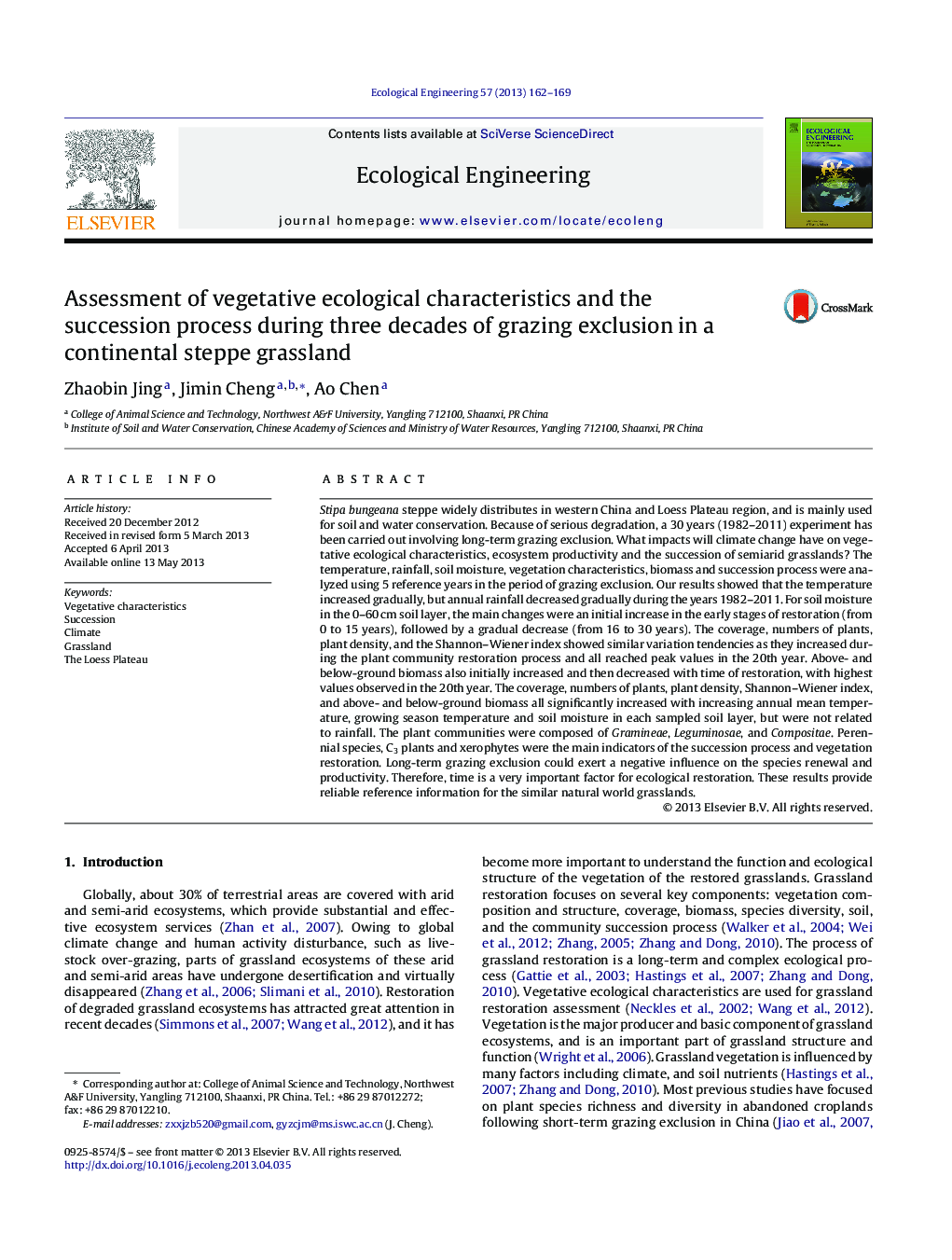| کد مقاله | کد نشریه | سال انتشار | مقاله انگلیسی | نسخه تمام متن |
|---|---|---|---|---|
| 6302603 | 1618041 | 2013 | 8 صفحه PDF | دانلود رایگان |
- Stipa bungeana steppe is the main pasture on the Loess Plateau of China.
- Changes of climate and vegetation were analyzed based on data from 1982 to 2011.
- Species diversity and biomass reached peak values in the 20th year.
- Not rainfall but temperature has a positive effect on vegetation.
- Rational cutting and grazing should be considered in middle stage of restoration.
Stipa bungeana steppe widely distributes in western China and Loess Plateau region, and is mainly used for soil and water conservation. Because of serious degradation, a 30 years (1982-2011) experiment has been carried out involving long-term grazing exclusion. What impacts will climate change have on vegetative ecological characteristics, ecosystem productivity and the succession of semiarid grasslands? The temperature, rainfall, soil moisture, vegetation characteristics, biomass and succession process were analyzed using 5 reference years in the period of grazing exclusion. Our results showed that the temperature increased gradually, but annual rainfall decreased gradually during the years 1982-2011. For soil moisture in the 0-60Â cm soil layer, the main changes were an initial increase in the early stages of restoration (from 0 to 15 years), followed by a gradual decrease (from 16 to 30 years). The coverage, numbers of plants, plant density, and the Shannon-Wiener index showed similar variation tendencies as they increased during the plant community restoration process and all reached peak values in the 20th year. Above- and below-ground biomass also initially increased and then decreased with time of restoration, with highest values observed in the 20th year. The coverage, numbers of plants, plant density, Shannon-Wiener index, and above- and below-ground biomass all significantly increased with increasing annual mean temperature, growing season temperature and soil moisture in each sampled soil layer, but were not related to rainfall. The plant communities were composed of Gramineae, Leguminosae, and Compositae. Perennial species, C3 plants and xerophytes were the main indicators of the succession process and vegetation restoration. Long-term grazing exclusion could exert a negative influence on the species renewal and productivity. Therefore, time is a very important factor for ecological restoration. These results provide reliable reference information for the similar natural world grasslands.
Journal: Ecological Engineering - Volume 57, August 2013, Pages 162-169
